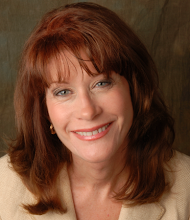Here is a wonderful story posted yesterday by Steve Andreas' blog. Thanks, Steve.
The Pond
We thought about it for years, living in the lowlands along the creek, where the water table is close to the surface. We thought of adding fish, and maybe ice skating in the winter if we dug it large enough.
One year a backhoe was in the neighborhood, so we dug a small test hole. It quickly filled with water, and we watched the water level change through the year—lowest in fall and winter when the creek dwindled, but always only a few feet below the surface.
And then we did it; a backhoe to dig, and a loader to move. Working through most of a summer day, down through dirt, sand, gravel and boulders, down to red shale bedrock, some six feet below, the hole gradually grew and quickly filled with clear water. A huge wound in the earth, all harsh ragged edges of raw earth, with broken tree roots…. We wondered if it had been such a good idea after all.
And then healing began; the edges softening and rounding with rain, grass and weeds slowly thickening, crawling down to the water’s edge. The fish we added didn’t last long, and changes in water level flooded or stranded the ice—no good for skating…and it was too small for that anyway.
But there were so many things we didn’t think of….
The reflection, mirroring in stillness the grassy meadow in the side valley, the dark green pines of the far ridge—like the ancient pine at the valley’s mouth silhouetted now against the sky. And the sky’s many changing moods: the soft pink or yellow of early morning, held by the pines in a brief soft alpenglow, the blue of day, sometimes with clouds or early morning fog, or darkening with rain and thunder, the orange of evening sunsets, and more, all resting gently on the willing surface.
Mirroring too, the seasons; the lush green of springtime fading to tan in summer and fall, the stark white of winter. The clear image shuddering in a breeze, or shattering entirely in a stronger gust, transformed into overlapping silver circles in the rain, congealing to translucency with falling snowflakes or the first hard freeze.
Dotted with fallen golden cottonwood leaves in autumn, briefly floating, sinking slowly to enrich the bottom, nourishing the cattails growing in the shallows, seeds brought in on the feet and feathers of the travelers, thickening over the years to provide a home for nesting redwing blackbirds.
Occasionally a great blue heron, statue still, intently searching the depths, like a graying philosopher pondering the meaning of it all, leaving with slow ponderous wing strokes, gradually gaining altitude. And the dragonflies—how to describe their fragile beauty, the way they dart back and forth above the water.
And the ducks!—and later geese—announcing themselves with gack-gack and gonk-gonk, wings outspread in between the trees to land, slicing the surface in a long narrow arrowhead of water, gliding silently, ducking for food. They come in March, an early whisper of the coming spring, chasing each other in short bursts of speed along the water, courting and mating.
We tossed in some water lily seedpods, gathered on a hike, not knowing how to plant them, they rooted in the deeper water. In the early spring the dark green leaves, still curled, begin to rise from the depths—another whisper of spring. Like thoughts we don’t yet know how to think, breaking the surface like anchored sailboats, then spreading and flattening on the surface. Later, the flowers, golden globes edged with green, rising above the water, opening to reveal more yellow, ringed with sooty mascara, relaxing to the water’s surface.
All this beauty, and more, we never dreamed of….
I like to think that human beings were created with the same lack of foresight.
Friday, April 29, 2011
Subscribe to:
Posts (Atom)





